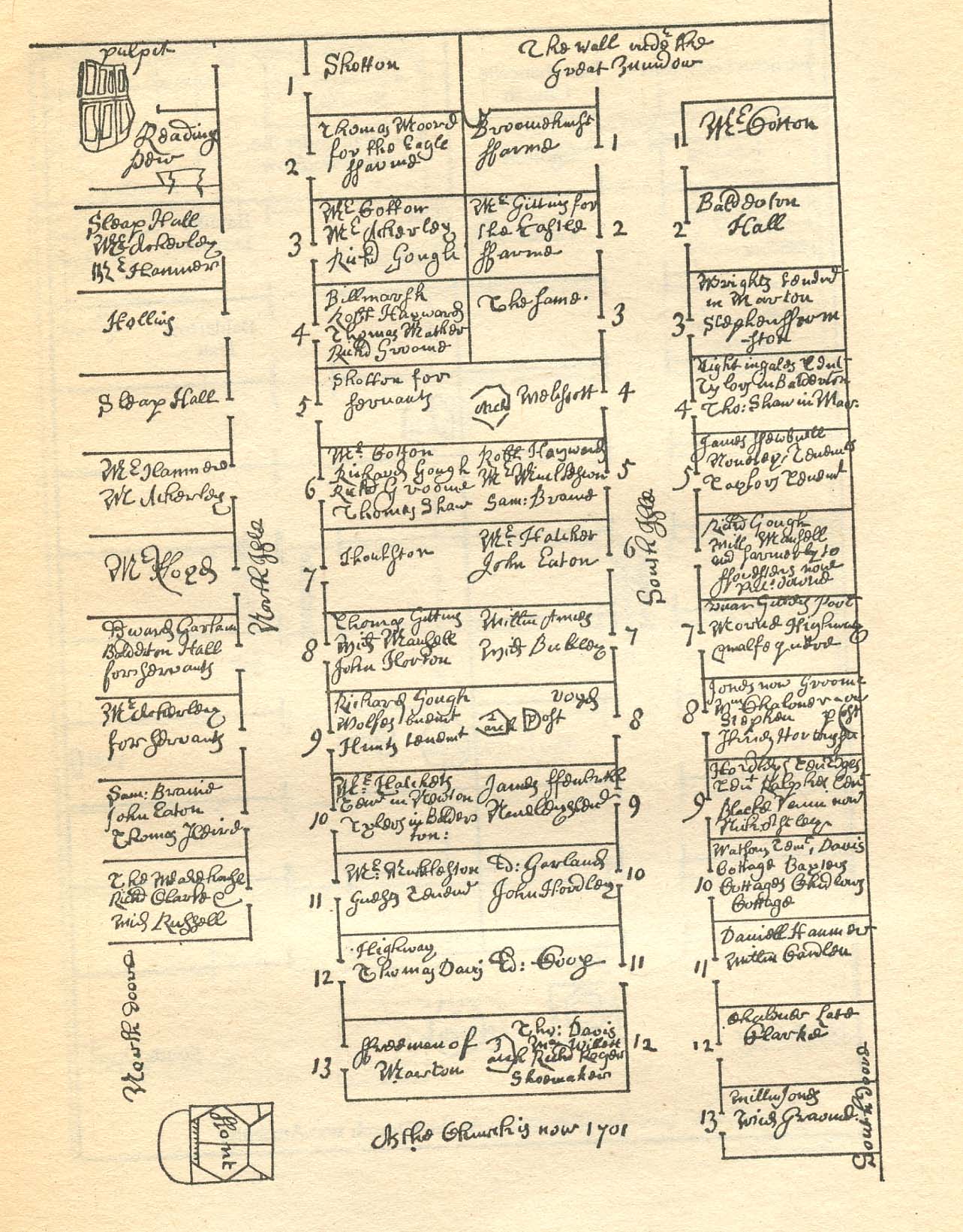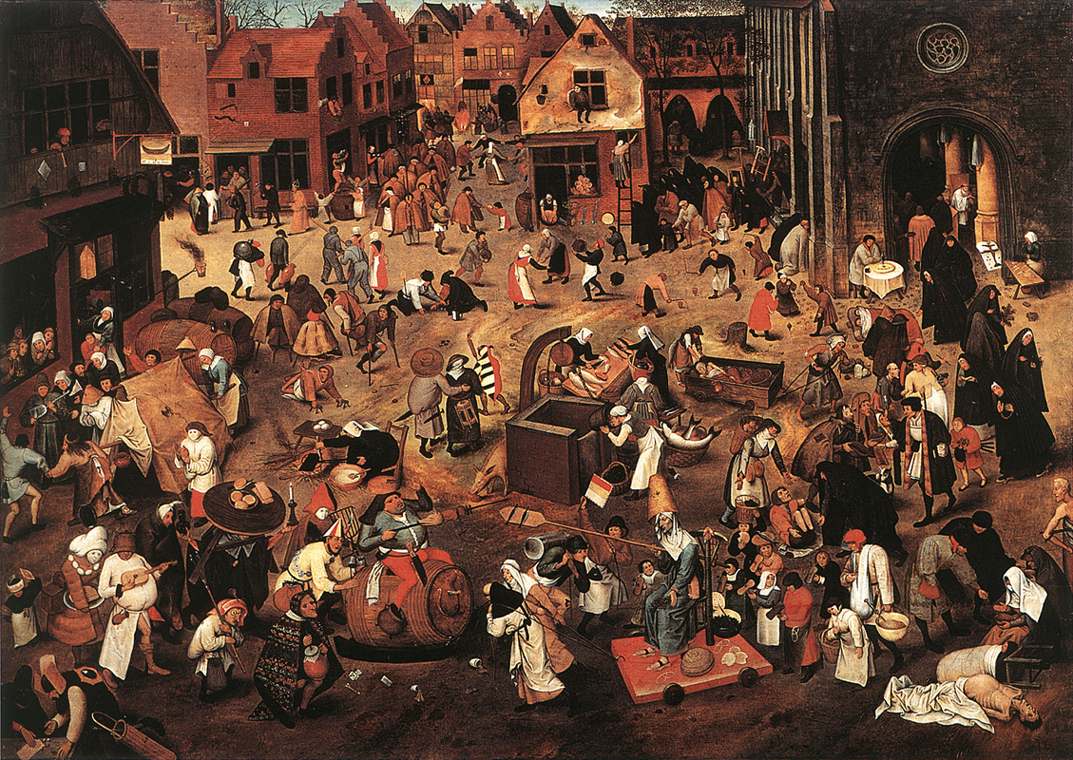Early Modern European Societies and Cultures, 1500-1800
19:00-21:30 W, Coleman 2750
Syllabus as pdf (brief version)
Available from Textbook Services:
- Underdown. David Underdown, Fire from Heaven: Life in an English Town in the Seventeenth Century (Random House, 1992, 2003) [17.506]
- McKeon. Michael McKeon, The Secret History of Domesticity: Public, Private, and the Division of Knowledge (The Johns Hopkins University Press, 2006) [17.502]
- Sabean. David Warren Sabean, Power in the Blood: Popular Culture and Village Discourse in Early Modern Germany (Cambridge University Press, 1988) [17.504]
- Wahrman. Dror Wahrman, Mr. Collier's Letter Racks: A Tale of Art and Illusion at the Threshold of the Modern Information Age (Oxford University Press, 2012) [17.508]
week 1. 9 Jan. Early or Modern; Social or Cultural?
- Introduction: When, where, and what was the early modern?

Culture Wars
DISCUSSION THEME: What is the evidence for a reform of popular culture, or for the identity of popular culture with plebeian culture and the withdrawal of a separate élite culture? Alternately, can there be a popular Puritan culture?
While maskinge in their folleis all doe passe (1607) BM, AN118365001
week 2. 16 Jan. Politics Round the Village Pump
- Underdown, 1-166 (pre-war Dorchester)
- Hindle, “A sense of place?”
- Samuel et al., “What Is Social History?” (part)
- Hilliard, Fire from Heauen (1613), title page
- Dorchester parish & other records online
Richard Gough, "As the Church is now 1701," from his History of Myddle
week 3. 23 Jan. (Un)Civil Wars & The Newsbook (EEBO)
- Underdown, 167-260 (Dorchester in Civil Wars and after)
- Burke, “The Discovery of the People” & “The Triumph of Lent”
- Earls Colne Project Database
Pieter Brueghel the Younger (1564/65–1636), Battle of Carnival and Lent
week 4. 30 Jan. Restoring Community? & The Pamphlet (ESTC)
- Underdown, Preface & Epilogue
- Muir, “The Idea of Community in Renaissance Italy”
- Sabean, Preface & “A Prophet in the Thirty Years’ War” (ch. 2)
- Culture Wars Papers Due
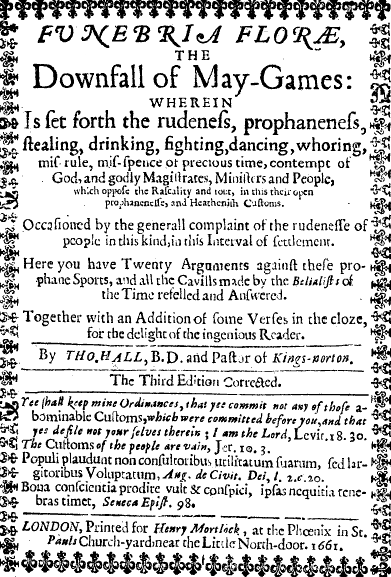
Order and Disorder
DISCUSSION THEME: Can we apply the concept of Herrschaft outside German rural communities? To what degree is the individual psyche social?
week 5. 6 Feb. Herrschaft and Agency
- Sabean, Introduction & “Communion and Community” (ch. 1)
- Gray, “Microhistory as Universal History”
- Wrightson, “Two Concepts of Order”
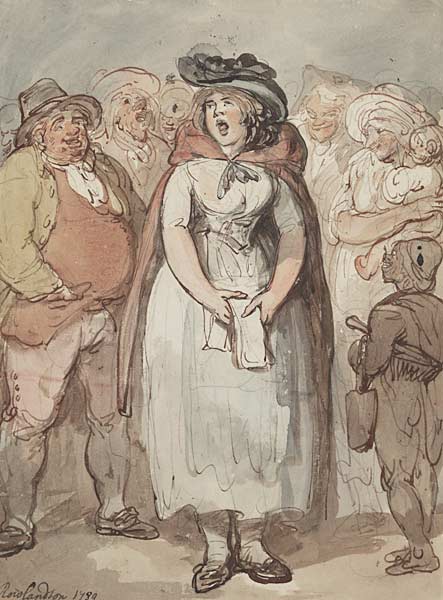
Thomas Rowlandson, "Ballad Singer" (1789), National Library of Wales, PZ52
week 6. 13 Feb. Authority and Community & The Pamphlet (EEBO)
- Sabean, “The Sacred Bond of Unity” & “Blasphemy, Adultery and Persecution” (chs. 3-4)
- Thompson, “The Patricians and the Plebs”
- Wood, “”Interpreting Popular Politics in Early Modern England"
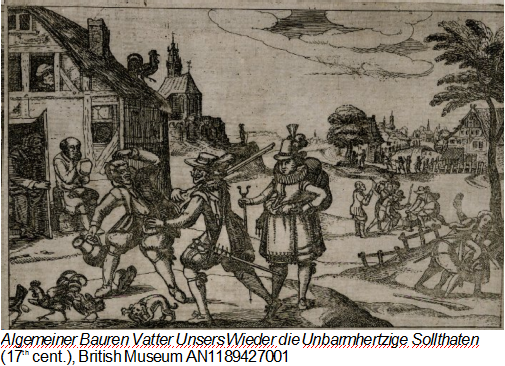
week 7. 20 Feb. Interrogating Popular Culture & The Pamphlet (Google Ngram Viewer)
- Sabean, Preface & Conclusion
- McKeon, “Introduction” & “The Devolution of Absolutism” (xvii-xxvii & 3-48)
- Ginzburg, “The Inquisitor as Anthropologist”
- (Dis)order Papers Due
The Public and the Private
DISCUSSION THEME: Did privacy exist in early modern Europe? How might public and private relate to social as well as cultural history?
week 8. 27 Feb. The Hall & The Ballad (Bodleian)
- McKeon, “The Age of Separations” (Part One)
- Darnton, “Introduction,” “Peasants Tell Tales,” & “Workers Revolt”
- Eley, “What is Cultural History?” (part)
- 1 March –[Rare Book Room, University of Illinois, tentative]
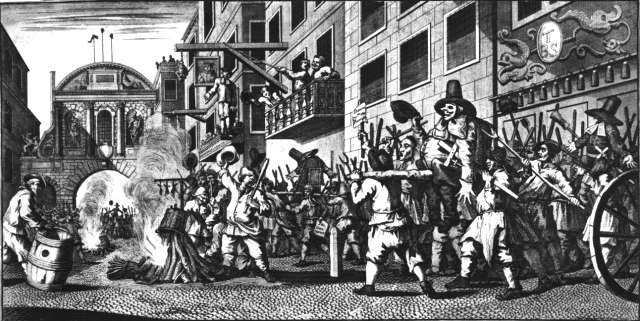
William Hogarth, from Hudibras (Hudibras confronts the burning of the rumps and Sir John Presbyter)
week 9. 6 March Domestication & The Broadside (Bute)
- McKeon, “Domestication as Form” (Part Two)
- Harvey, “Men Making Home”
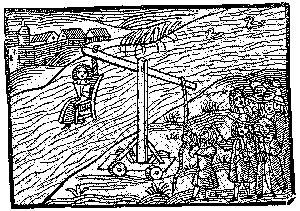
week 10. 20 March Public Secrets & Images (Lewis Walpole)
- McKeon, “Secret Histories” (chs. 10-12)
- Reay, “Orality, Literacy, and Print”
week 11. 27 March Publishing Interiority & The Newspaper (Early English)
- McKeon, introduction & conclusion
- Cowan and Yetter, “Publicity and Privacy in Early Modern Europe”
- Public/Private Papers Due
Print Culture as Popular Culture
DISCUSSION THEME: Was there a Print 2.0 or is it a trope? If so, when was it?; what was it? Does the print/image tell us about the author/artists or the reader/viewer?
week 12. 3 April The Audiences for Printing and Writing & The Pamphlet (Google Ngram Viewer)
- Wahrman, introduction & chs. 1-2
- Jenner & McShane, “Roasting the Rump"
week 13. 10 April Painting Prints & The Periodical (British Periodicals)
- Wahrman, chs. 3-7
- St. Clair, “The Political Economy of Reading”
- Burke, “Learned Culture and Popular Culture in Renaissance, Italy”
week 14. 17 April Art Trade and Artisan Knowledge
- Wahrman, chs. 8-12, & epilogue
- Reay, “Popular Cultures”
- Print/Popular Culture Papers Due
week 15. 24 April/1 May Early Modern Society in Print
- Conclusion: Oral Reports (Essays due during finals)
requirements, papers, and exams
office hours
